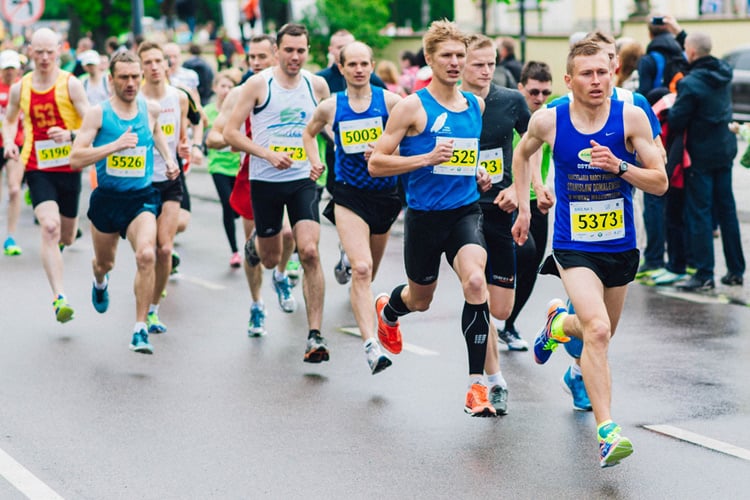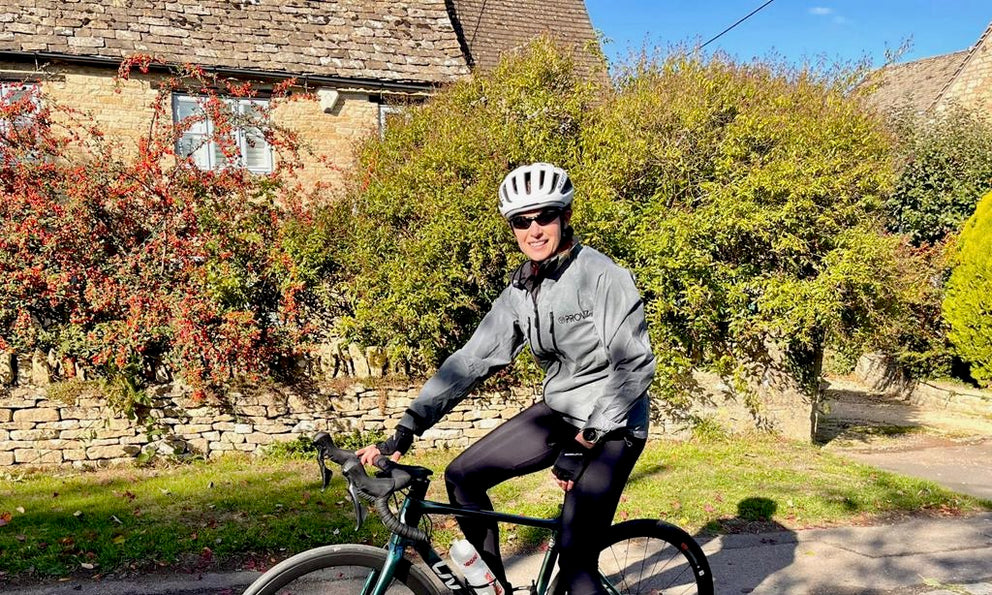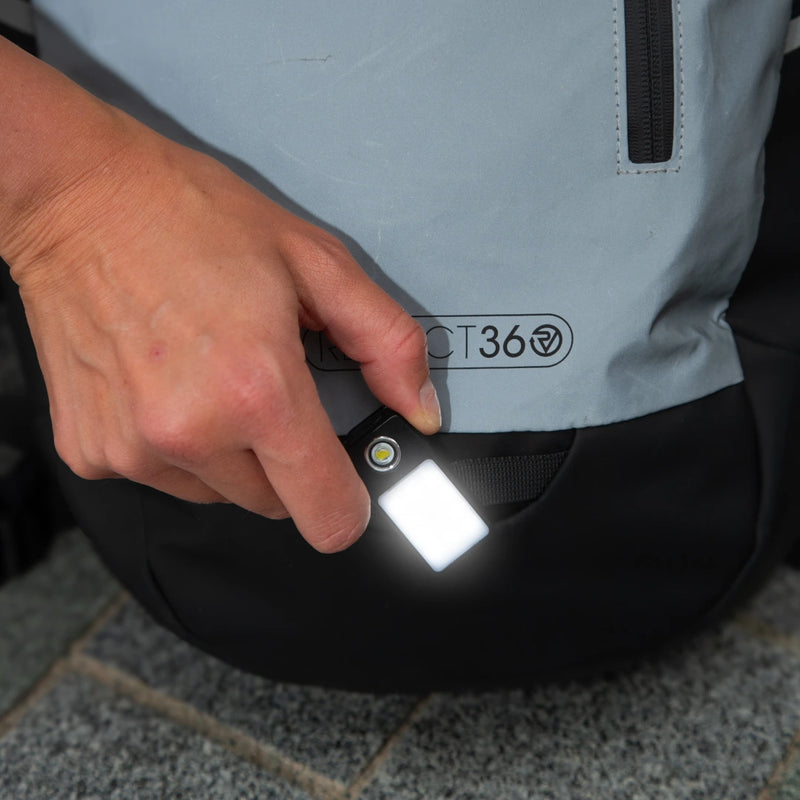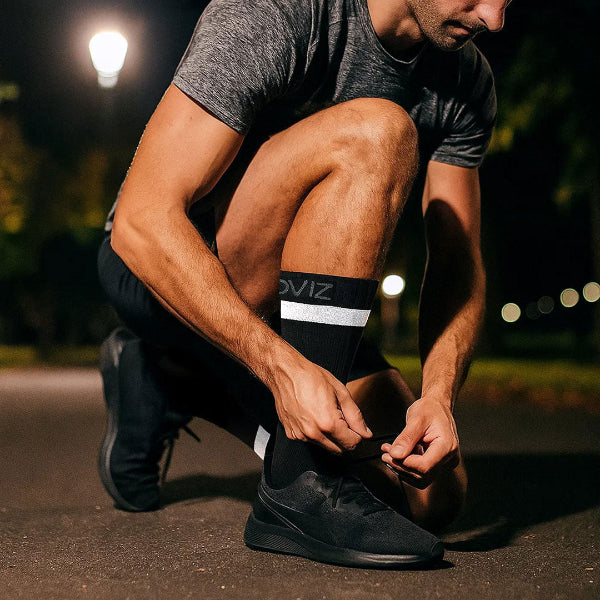Participation in triathlons and ultramarathons may be on the rise, but there is still something quite special about the London Marathon. You’ll be pounding the pavements with around 40,000 other runners, all trying to hit a personal best or raising money for charity. But, while applying for your place is one thing, training for it is quite another, and the reality of the challenge is going to kick in very quickly!
Don’t worry, though: we’re here to help. Over the next six months, we’ll be bringing you a series of hints, tips and tricks to get you through every single one of those 26.2 miles.
First up: our five top tips for kick-starting your training regime…
1. Warming up
It is tempting to get too keen, too soon. But this is a sure fire way to injure yourself and, as our triathlon expert Alan Hews explained recently, it doesn’t matter how much technique you have if you can’t compete in the first place.
So, we asked Mary Harmen, physiotherapist and Pilates instructor, for her advice on how best to prevent injury:
She explains: “The aim of a warm up is to prepare the body for exercise and to help prevent injury. The warm up should slowly increase your heart rate and circulation to help loosen the joints and increase blood flow to the muscles. The warm up is also important to help mentally prepare yourself for your run. There is no hard evidence on how long we should warm up for, but it should last for approximately 20 minutes.”
A warm up should contain four phases.
Phase 1
This should involve low-intensity cardiovascular exercise, such as light jogging or fast walking, to increase your heart rate and blood flow to the muscles.
Phase 2
The second phase should be a period of stretching. It’s thought that dynamic/active stretches are better to loosen the relevant joints and muscles and you should focus on the specific body parts that you are going to use during your run. Example exercises include squats, high knee lifts, lunges, arm rotations and trunk rotations. Check out the Runner’s World guide for more ideas.
Phase 3
This should entail warm up activities that involve agility, acceleration, deceleration and speed drills to prepare your body for faster movements.
Phase 4
This is where you perform sports-specific skills.
Mary says: “By the end of your warm up, you should be working at 100% to ensure that your body is ready to perform at its best from the start of the race.”

2. Look after yourself
Running can be tough on your body, especially if you are always road running. In addition, your training is often going to take place during the dark winter months. Where possible – at weekends or when you aren’t at work – try to exercise in daylight; it is a lot more exhilarating and you are less likely to trip or injure yourself.
If possible, vary your surface. Often you’ll be running on tarmac, but try to also run on grass or softer surfaces, as it reduces the impact on your legs. If you are finding tarmac is causing you problems, try using a treadmill on certain runs. The surface has a lot more give, making it gentler on your legs.
Make sure you have the right kit for comfort and safety. Trainers are probably the single most important investment to your training and you will probably go through one good pair during that time. If that’s the case, make sure you replace them (ideally with exactly the same make) about a month before the marathon, so that you are used to your new ones. Make sure you have running trainers rather than all-rounders.
Meanwhile, your running clothing needs to fit properly; you don’t want to be hoisting up your leggings the whole time or trying to prevent your midriff from showing. It will only distract you from the task at hand. It is also vital, day or night, to make sure that you are visible to any traffic.
Eat well and drink plenty of water – it’s worth researching your water bottle. You can get easy-to-hold bottles, as well as ones with straps. Work out what’s best for you and make sure you drink plenty of water continuously.
3. Find a buddy
Whether you like to exercise alone or with a friend, or club depends on your character, but running long distances can be tough both physically and mentally. A companion can help you through the tougher bits and keep your motivation flying high. It is also safer to run with someone else. If you are running for a charity, they can often put you in touch with other people in your area that are running for the same cause, otherwise there are lots of running clubs, particularly in urban areas. Run Together is a good place to start.
4. Variety – pace and activity
When it comes to the ‘big day’ you will need to have learned to pace yourself, so it is a good discipline to work on from day one. If you listen to music while running, it can be good to change pace per song, or from landmark to landmark. Changing pace also gives you mental challenges while you are running, adding to the experience and increasing motivation.
It’s also worth mixing things up and adding in some different types of exercise to support your training. It stops your body getting too comfortable and if you add in yoga or Pilates, you can help keep your body supple and strong. Swimming, cycling and aerobic classes can also help your general level of fitness.
5. Set Goals
Set yourself realistic goals throughout your training, whether it is running your first mile, taking part in a 10K race, or running up the steep hill that you would normally choose to walk. Goals help provide focus and motivation and give you a sense of achievement.
Stay tuned over the next few months for more advice. We’ll be talking to everyone from beginners to seasoned runners, and personal trainers to reflexologists, getting their tips on training, keeping injury-free, and finding out their marathon day secrets to get you through the day itself.

















